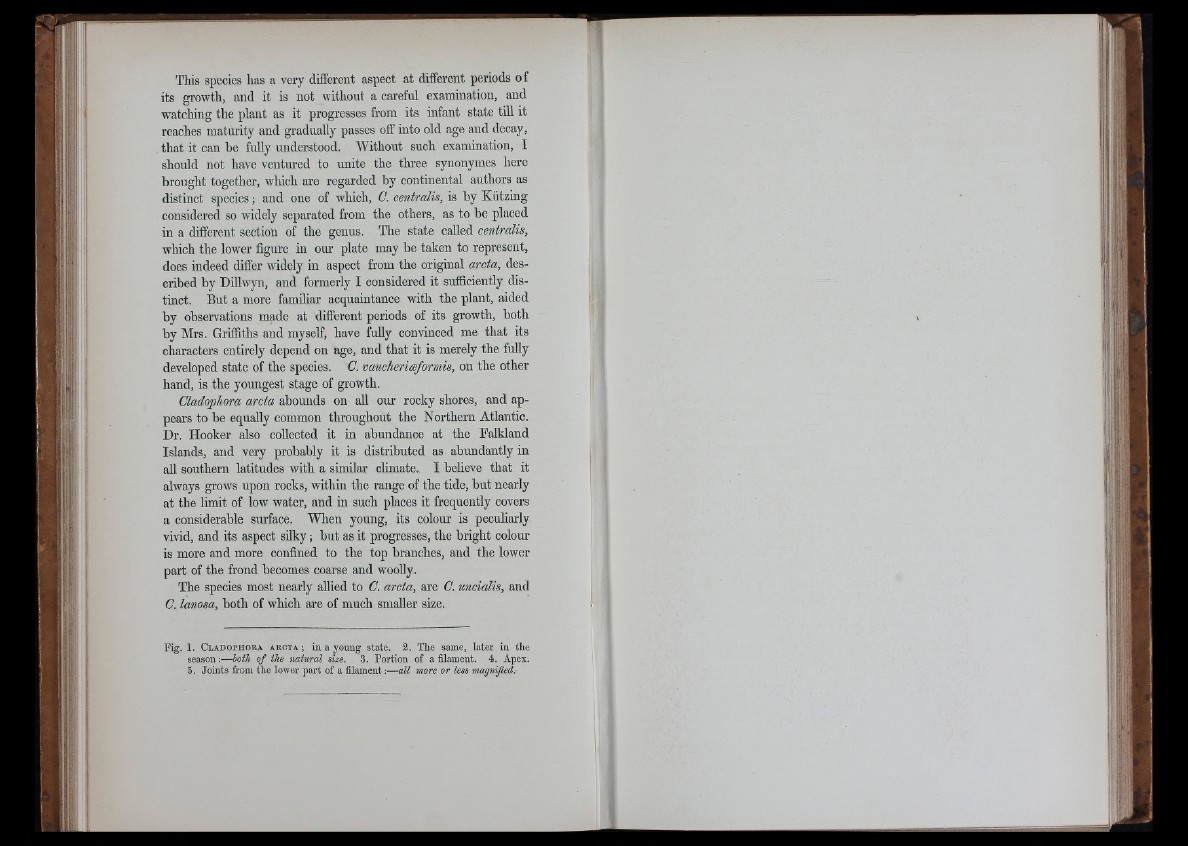
This species has a very different aspect at different periods of
its growth, and it is not without a careful examination, and
watching the plant as it progresses from its infant state till it
reaches matmdty and gradually passes off into old age and decay,
that it can he fuUy understood. Without such examination, I
should not have ventured to unite the three synonymes here
brought together, which are regarded by continental authors as
distinct species ; and one of which, C. centralis, is by Kiitzing
considered so widely separated from the others, as to be placed
in a different section of the genus. The state called centralis,
which the lower figm'e in our plate may be taken to represent,
does indeed differ widely in aspect from the original arcta, described
by Dillwyn, and formerly I considered it sufficiently distinct.
Ilut a more familiar acquaintance with the plant, aided
by observations made at different periods of its growth, both
by Mrs. Griffiths and myself, have fully convinced me that its
characters entirely depend on age, and that it is merely the fully
developed state of the species. C. vauchericeformis, on the other
hand, is the youngest stage of growth.
Cladophora arcta abounds on all our rocky shores, and appears
to be equally common throughout the Northern Atlantic.
Dr. Hooker also collected it in abundance at the Falkland
Islands, and very probably it is distributed as abundantly in
all southern latitudes with a similar climate. I believe that it
always grows upon rocks, within the range of the tide, but nearly
at the limit of low water, and in such places it frequently covers
a considerable surface. When young, its colour is peculiarly
vivid, and its aspect silky ; but as it progresses, the bright colour
is more and more confined to the top branches, and the lower
part of the frond becomes coarse and woolly.
The species most nearly allied to C. arcta, are C. uneialis, and
C. lanosa, both of which are of much smaller size.
: ii
If :
Fig. 1. C l a d o p h o e a a e c t a ; in a young state. 2. The same, later in the
season:— both o f the natural size. 3. Portion of a filament. 4. Apex.
5. Joints from the lower part of a filament:— all more or less i
H ‘1